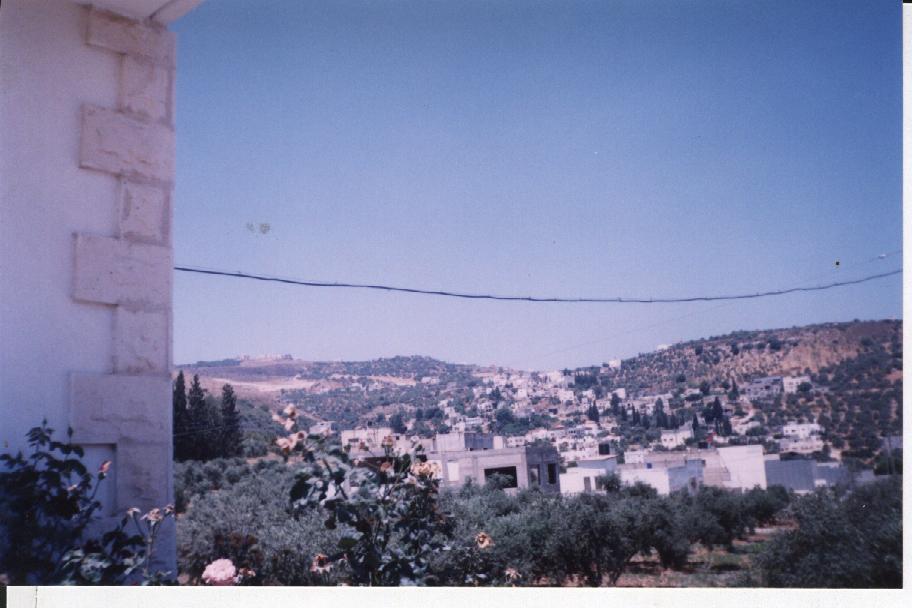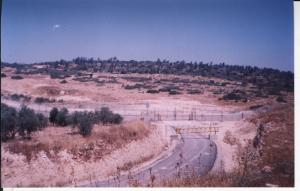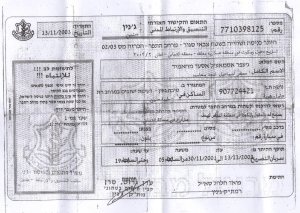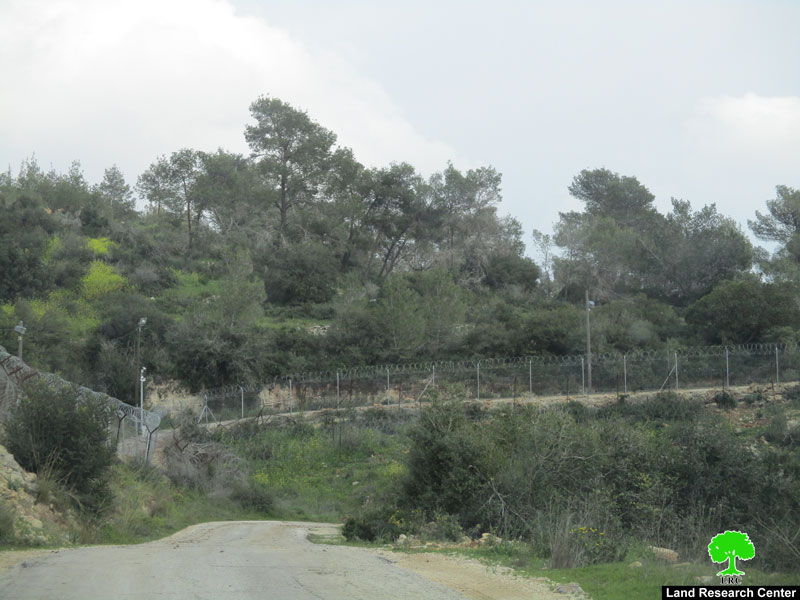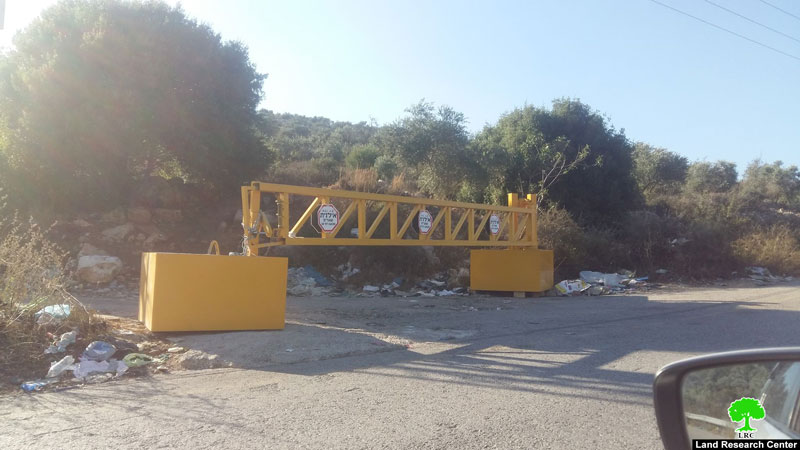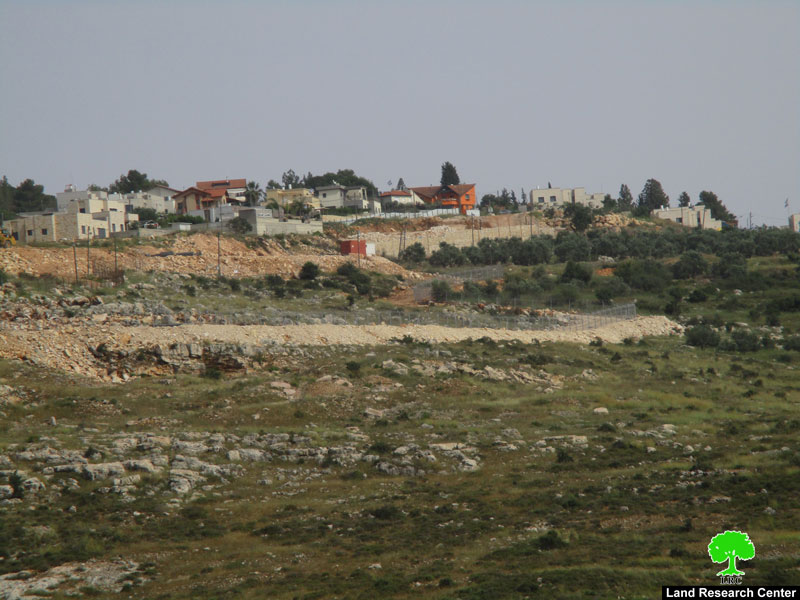Location and population
The border village of Attayba is located 16 km to the north west of Jenin city. In 1967, it had a population of 450 people. The latest census conducted in 2002 put the number of residents at 2100. Click to see Photo 1
A general view of Attayba village- Jenin. Photo courtesy of LRC
Um Al Fahem town located at the western side of the green line is the mother town of Attayba as many people left it during the war of 1948 and settled in Attayba because of its fertile land.
Before the Israeli occupation of 1967, most of Attayba citizens depended on agriculture and animal breeding. Between 1967 and 2002, about 90% of the village citizens worked in agriculture and as laborers inside Israel, 6% worked in commerce and the remaining 4% in governmental jobs. After the year 2002, 91% of work force became unemployed.
Village area
The total village area was estimated at 4200 dunum before the war of 1948. Today, the remaining area within the West Bank is only 2300 dunums of which 1000 dunums are designed as built up area. The Wall has separated about 700 dunum of the remaining land of Attayba ( almost one third of the remaining village lands).
The village and the Apartheid Segregation Wall
The Wall encircles the village of Attayba from its northern and north western sides forcing most of local work force to become unemployed. In addition, the Wall will stop any further expansion in the built up area designated for Palestinians. The Wall was built at the distance of two km on lands belonging to Attayba citizens with a width ranging from 80-90 meter. The Wall is formed of barbed wires, trenches, early warning systems and patrol roads. It constitutes a second catastrophe in the history of Attayba after the one in 1948 in which more than one fourth of the village lands were confiscated and annexed into Israel. Click to see location Map
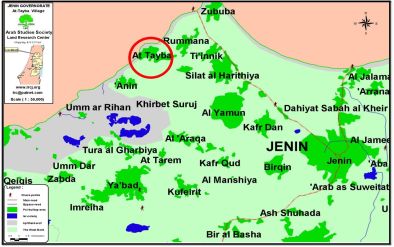
The village of Attayba ( in red circle) with the Wall passing through its land
Impacts of the erection of the Wall on Palestinian citizens of Attayba village:-
A) Economic impact:-
1. About 700 dunums of olive trees have been separated by the Wall, in addition to the uprooting of 570 olive trees to make room for the erection of the Wall path.
2. 91 % of the village workforce has become jobless mostly those working in agriculture and labor market in Israel.
3. The erection of two gates: the first in the northern side of the village, and the second in the western side of the village. During the olive picking season, the Israeli military issues special passing permits for Palestinian farmers whose fields are located behind the newly established Wall. The gates were used to be opened every day at seven AM for the period of 30 minutes only. At the end of the season, only very limited number of farmers (not exceeding 15) have been able to enter to and tend their fields behind the Wall. Click to see photo 2
The western Wall gate of Attayba which barely opens in the face of Palestinians, Photo courtesy of LRC
A copy of an Israeli passing permit issued for a Palestinian farmer from Attayba village whose lands are located behind the Wall: it is valid from 13.11.2003 to 30.11.2003. Although it says that the bearer of this permit can stay in the closed military zone from 5 AM, the Wall gates are only opened at 7 AM for only 30 minutes.
B) Social impact:-
The set up of the Israeli Separation Wall has severed social relations between the citizens of Attayba and citizens of other border villages inside Israel such as the town of Umm Al Fahim . Click to see photo 3
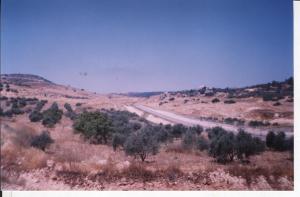
Part of the Wall which separates between the village of Attayba and its agricultural lands, Photo courtesy of LRC
C) Psychological impact:-
- Creating an atmosphere of terror and fear amongst Palestinian community of Attayba as a result of intermittent shooting of gun fire, flares and light bombs at the hands of the Israeli army patrolling the area.
- Instigating a sense of depression, frustration and melancholy amongst Palestinian criticizes of Attayba because of the on going Israeli repressive actions, encompassing the prevention of free movement, denial of access to education, health.
LRC field worker visit to the village
During LRC's field worker visit to the village, he met a number of Wall victims, including Mr. Isma'il As'ad Shehada Mahamid, who mentioned that the Israeli occupation authorities had confiscated his 60 dunums of land leaving him with no source to live on. He stressed the fact that the Israeli military authorities refused to provide him with a passing permit to reach his agricultural land behind the Wall path.
Prepared by
The Land Research Center
LRC


